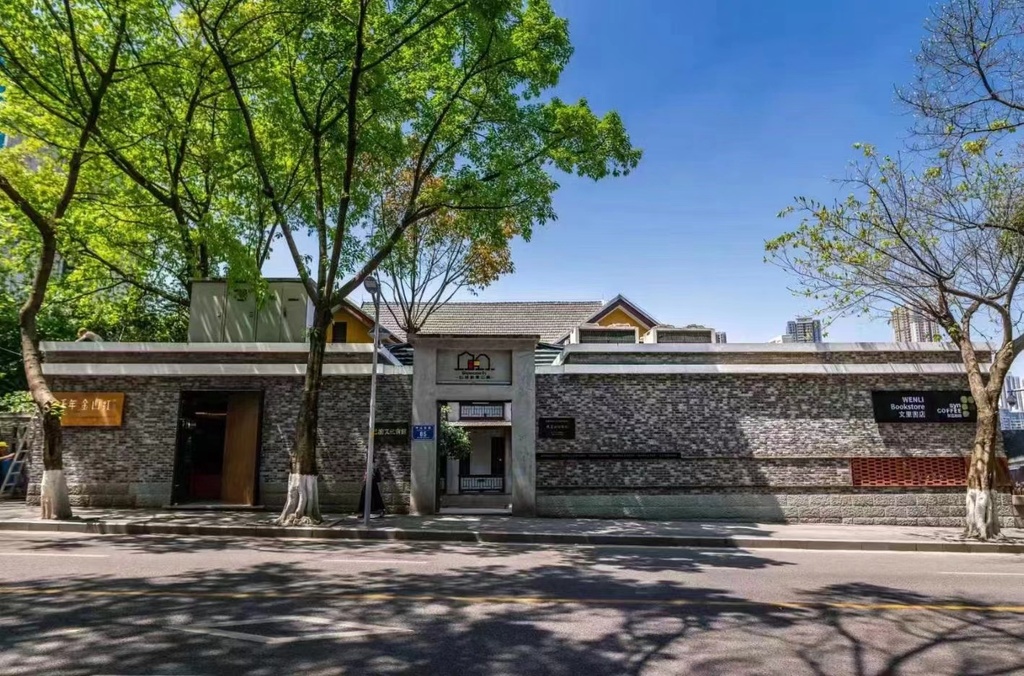
Located in Pengshui County, Chongqing, the Ayi River derives its name from the Miao people’s term “Jiao Ayi”—a title for kind, beautiful, and wise women. The area integrates mountains, waters, forests, springs, and gorges into a harmonious whole, showcasing grandeur, wonder, adventure, elegance, and tranquility. It features three sightseeing zones (Canyon Exploration, Walking Trails, Bamboo Rafting), two leisure resorts (Ethnic Culture Reception Center, Niujiao Village Ethnic Retreat); two experience zones (Rafting Adventures, Outdoor Activities), one thrilling rafting section, one specialty shopping zone. Besides, eight signature attractions are open to the public: Valley Soundscape Experience, Bamboo Raft Serenade, Emerald Pool Play, Rapids Navigation, Miao Village Romance, Qinglong Sky Elevator, Qinglong Cave, and Qinglong Valley. Currently, the scenic area and its hotels host over 600,000 visitors annually.
Situated in Yongchuan District, this 3-billion-yuan park spans 2,041 mu (≈336 acres) and stands as western China’s only integrated resort combining “animal encounters + mechanical rides + water parks + animal performances + themed hotels”. Built on natural mountainous terrain, it houses over 10,000 rare animals from more than 100 species across five continents. The park has cultivated star attractions like giant panda “Hualushui”, chimpanzee “Yuhui”, dolphin “Lezaizai”, and celebrity zookeeper “Kangaroo Dad” Shen Wei. It garners nearly 100 annual features in national media like CCTV and People’s Daily, with self-operated social media accounts boasting millions of followers.
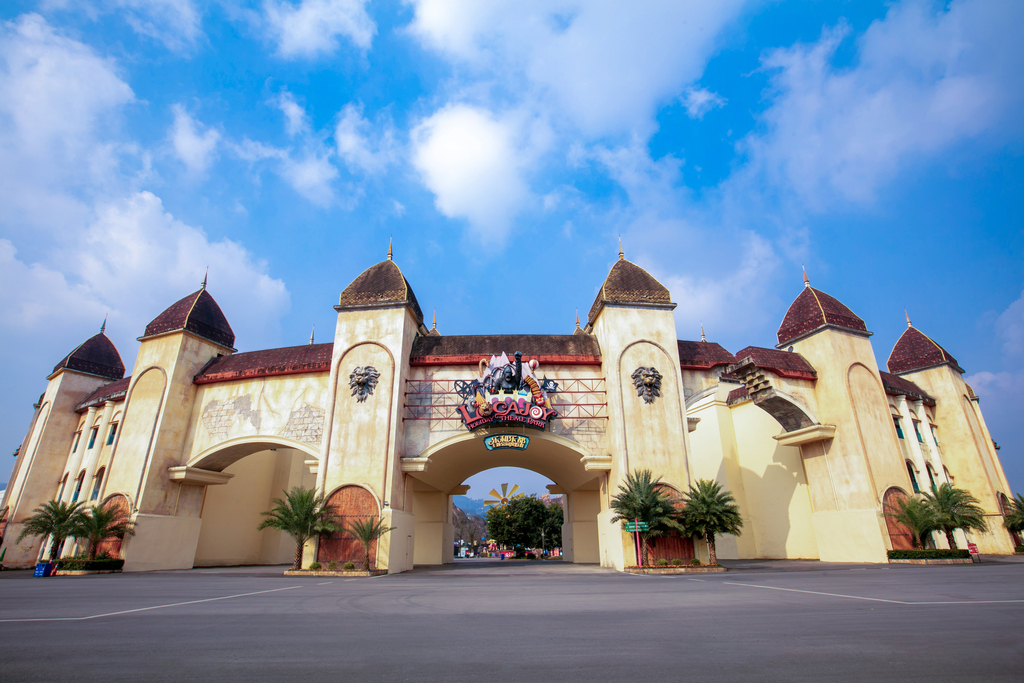
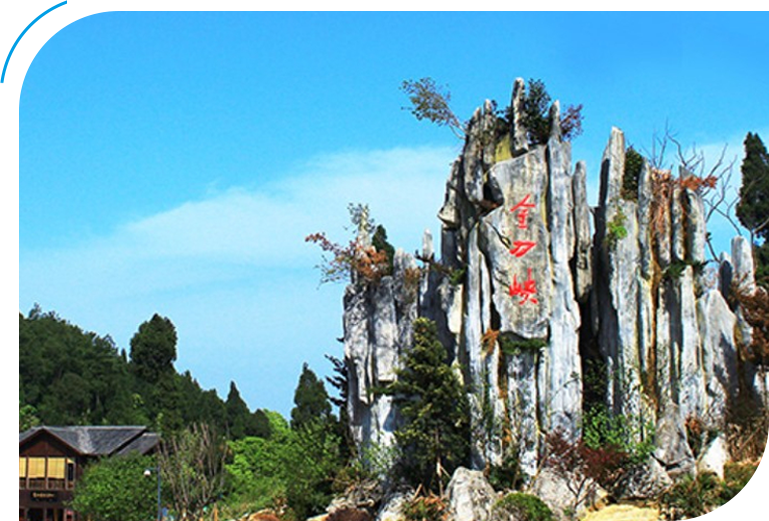
Located in Jindao Gorge Town, Beibei District, this 9.6-kilometer-long canyon is divided into upper and lower sections. The upper gorge features steep slopes, intricate ravines, and crystal-clear streams, while the lower gorge offers gentler terrain dotted with caves, deep pools, and cascading waterfalls. Hiking the full trail immerses visitors in nature’s artistry. The area’s signature “Canyoning” activity—blending swimming, rock climbing, rappelling, and cliff jumping—draws global outdoor enthusiasts through its annual Canyoning Elite Challenge. Adventurers can also experience cliff rappelling from the 880-meter-high Cangdao Cave, combining adrenaline rushes with breathtaking views.
Nestled in Tongjing Town, Yubei District, this resort boasts Chongqing’s exclusive dual cold-and-hot spring resources, renowned for their abundant flow, exceptional quality, and therapeutic value. With lush forest coverage and high negative oxygen ion levels, it has earned accolades such as “National Five-Star Hot Spring Enterprise”, “China’s Best Hot Spring Resort”, and “Top 10 Leisure Tourism Destinations”, welcoming over 3.3 million visitors to date. Beyond its core offerings—hot spring baths, canyon tours, and hotel stays—the resort has launched innovative experiences like hot spring therapy, canyon hot pot dining, and kayak sports parks. Its plans include promoting public hot spring culture, elevating its global “Capital of Hot Springs” brand, and building a “five-in-one” international resort integrating hot spring wellness, canyon sightseeing, adventure sports, leisure retreats, and family education.


Situated in Pengshui County, this multifaceted destination combines tourist services, water sports, leisure travel, canyon sightseeing, yacht experiences, and ethnic culture. The area features rushing waters, majestic mountains, picturesque landscapes, and a variety of scenic spots such as dramatic cliffs, tranquil waterfalls, ancient trees, and rare wildlife. Its mountains evoke comparisons to the grandeur of the Kuimen Gorge, the magnificence of the Three Gorges, and the beauty of Mount Emei. Its crystal-clear waters, resembling glass, have earned the area the reputation of “a hundred-mile artistic masterpiece along a thousand-mile river”. Qing Dynasty poet Weng Ruomei praised it as “Sichuan’s foremost natural wonder”. Currently, the scenic area offers canyon cruises, water parks, and riverside boardwalk strolls. It is recognized as “China’s Most Popular Scenic Area” and awarded “Most Poetic Destination” in national tourism polls.
Located in Nanchuan District, Golden Buddha Mountain (historically called Jiudi Mountain) lies near the enigmatic 30th parallel north, sharing latitude with Mount Everest, the Mayan civilization, and the Egyptian pyramids. Renowned for its triple wonders—Karst World Natural Heritage, biodiversity, and Buddhist culture—the mountain dazzles with cliffs, canyons, karst peaks, caves, stone forests, springs, waterfalls, and meteorological spectacles. On June 15, 2014, it was inscribed on the UNESCO World Natural Heritage List.
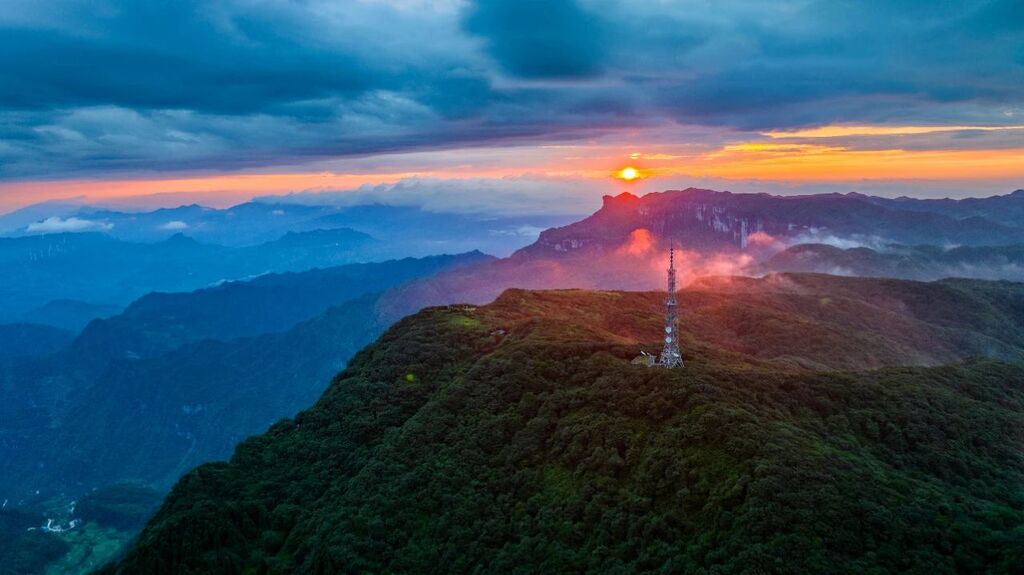
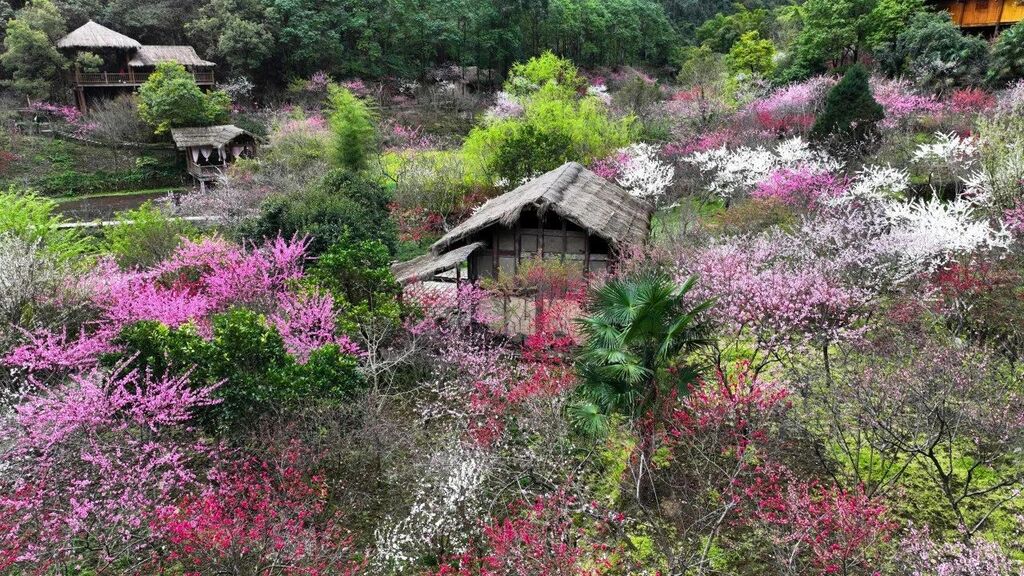
Spanning 50 square kilometers in Youyang County, this ethereal landscape comprises eight zones: Ancient Peach Blossom Valley, Taigu Cave, Youzhou Ancient Town, Taohuayuan Forest Park, Taohuayuan Square, Taohuayuan Folk Culture Town, Eryou Mountain Peach Blossom Paradise Theme Park, and Taoyuan Grand Stage. Blending karst geology, Qin and Jin farming traditions, Tujia ethnic culture, and pristine ecology, it epitomizes the most breathtaking natural scenery of the Wuling Mountains and preserves the rich heritage of the Tujia and Miao peoples.
Perched in Yuzhong District, this 79-meter-tall, 11-story landmark covers 31,500 square meters. Originally a Warring States-era military fortress (316 BCE), Hongyadong evolved into a Song Dynasty grotto temple and later integrated with the Hongyamen, which was originally an open gate. In the 4th year of the Hongwu reign of the Ming Dynasty (1371), Dai Ding rebuilt Chongqing City, creating nine open gates and eight closed gates, with Hongyamen serving as a closed gate. During the Ming Dynasty, it thrived as a bustling commercial hub, and by the Qing Dynasty, it had developed into a prosperous river port, acting as a trade center for Chongqing. Reborn in 2006, Hongyadong now features stilted houses, retro-style commercial streets, and the iconic Hongya Emerald waterfall (Hongya Dicui). Its labyrinth of shops offers local cuisine, entertainment, and handicrafts, cementing its status as one of the “Twelve Scenic Treasures of Bayu” and a representative attraction in Chongqing’s first billion-yuan business district.
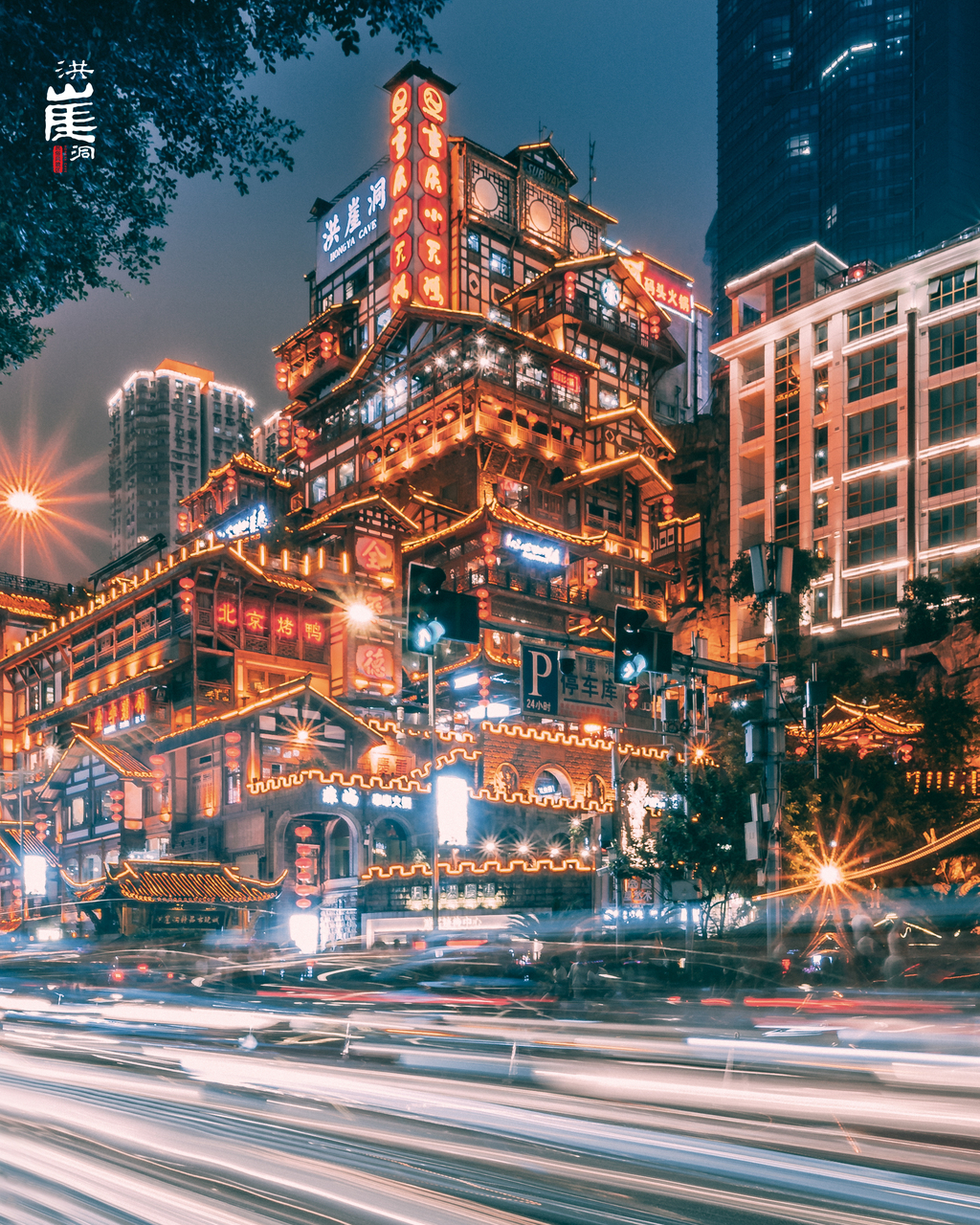
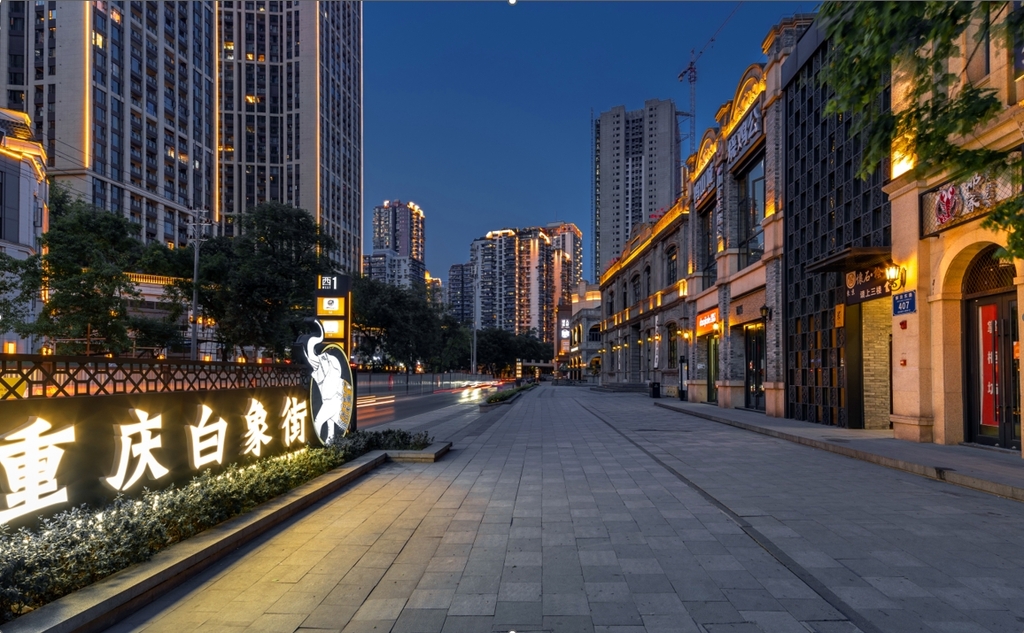
Nestled between Wanglongmen and Taipingmen in Yuzhong District, Baixiang Street owes its name to a legend: a white elephant statue (Baixiang) faced a green lion (Qingshi) in Xuantan Temple, Nan’an District, across the Yangtze River, symbolizing “Green Lion and White Elephant Guarding the River”. After Chongqing became a Qing Dynasty treaty port, it attracted global firms like American Dollar Steamship Co., Japanese Nasshin Kiesn Kaisha, British Swire, and Jardine Matheson. In 1926, industrialist Lu Zuofu founded the Chongqing Minsheng Shipping Company here, and in 1929, wealthy businessman Huang Xizi established the Fuyang Shipping Company, with another influential merchant, Li Yaoting, opening the “Tian Shun Xiang” business. Dubbed “China’s Wall Street” for its concentration of guilds (cotton, silk, dried goods) in the 1930s, the district now revitalizes landmarks like Former Xinghua Private School (now Xiling Study), Shanxi Guild Hall (now Chongqing Historical and Cultural Museum), and Former Site of Chongqing Customs Office (now Intangible Cultural Heritage Center of Chongqing Mother City). It is home to projects such as intangible cultural heritage experiences, immersive theaters, history exhibitions, family education programs, and art galleries.
Located in Yuzhong District, this mansion was built in the early Republic of China era by a salt merchant. It was later occupied by Dai Li (head of the Nationalist intelligence agency) from 1938 to 1945, who redesigned it with East-meets-West architectural flair as his residence and the office of the Military Intelligence Bureau. Approved by the Chongqing Municipal Party Committee and Chongqing government in 2007, the restored Dai Li Mansion (a protected heritage site) now thrives as No. 85 Creative Mansion—a cultural tourism innovation hub hosting over 100 cultural events and serving as an important showcase for Chongqing’s cultural tourism.
